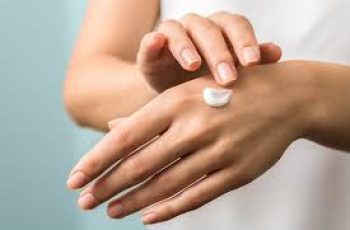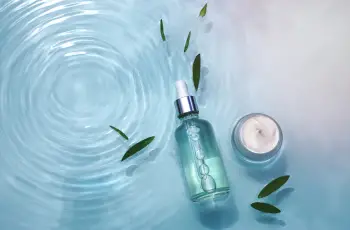
Estrogen Topicals for the Face: Estriol Cream
I see a lot of ads on social media for using estrogen and estradiol topicals to treat facial wrinkles and aging skin.
The most widely advertised is Alloy M4 cream, which contains estriol. Do these creams work?
Are they safe? Which is best? I discuss different estrogen skin care products and natural options and compare their pros and cons.
To find the right skin care for your Bowman skin type, take our skin care quiz.
Estrogen is an excellent anti-wrinkle cream.
It should only be used by postmenopausal women who have a low risk of breast cancer.
Do not use if you have melasma or hyperpigmentation.
Estrogen is available in prescription, cosmetic, and natural forms.
Discuss use with your doctor.
Why use estrogen creams?
There are really only three reasons to use estrogen creams:
Estrogen deficiency due to loss of ovarian function
Menopause
Menopause
Estrogen deficiency
If your ovaries have been removed, or if you have abnormal estrogen levels due to PCOS or another medical condition, discuss treatment options with your doctor.
Menopause
Menopause marks the beginning of a new phase of life, and with it come many changes in the body, including changes in the skin.
My patients often complain of rapid skin aging, hair loss, acne, sun spots, dry skin, and itching during premenopause, menopause, and postmenopause.
As ovarian function declines, the decline in hormone levels can significantly affect the health and appearance of the skin.
Understanding the scientific background of these skin changes can help develop the best skin care routine for mature skin during menopause.
The key is to use the right skin care during menopause to prevent skin aging. One promising option is estrogen cream.
Please note: If you are already taking hormone replacement therapy (HRT), then you may not need additional estrogen cream. Talk to your doctor before using any topical estrogen.
Transitioning to Female
Topical estrogen easily penetrates the skin and enters the systemic circulation. Therefore, topical estrogen creams can greatly affect your hormonal status.
Talk to your transgender specialist before using any estrogen creams. Hormone therapy is very complex and requires medical supervision.
Fine Lines and Wrinkles for Women
There are many good anti-aging creams. To find out which one is best for you, select your skin type octagon. In our skin type quiz, you will be assigned one of 16 skin types.
Once you know your skin type and skin number, you can refer to the skin type octagon when shopping for skin care products to see if it is the best anti-aging product for you.
Facial Estrogen Creams
Estrogen creams were developed to treat menopausal skin changes. They contain different forms of estrogen, each with unique properties and benefits:
Estradiol: Estradiol is known for its effectiveness and can improve skin elasticity and reduce wrinkles. Available only by prescription.
Estriol Esters: A gentler alternative. Estriol is less effective, but still beneficial for skin hydration and reducing signs of aging. Available only by prescription.
Methylestradiol propionate (MEP): A synthetic derivative that provides stability and efficacy to skin care formulas.
It is found in cosmetic skin care creams that do not require subscription, such as: B. Emepelle.
Xenoestrogens: Synthetic or natural compounds that mimic estrogen in the body and are sometimes added to skin care products for their estrogen-like effects.
Bioidentical hormones: Hormones with a molecular structure identical to the body’s own hormones.
They are often used in hormone replacement therapy and are increasingly used in skin care due to their natural benefits.
Phytoestrogens (phytoestrogens): These plant-derived estrogens are used in skin care for their mild estrogen-like effects and are commonly found in ingredients such as soy and wild yam.
Below you can find over-the-counter estrogen or estrogen analog creams:
Benefits of estrogen in skin care
Estrogen creams have several benefits for aging skin:
Maintain skin elasticity: Maintains elastin levels, thus preventing skin sagging.
Reduces fine lines and wrinkles: Stimulates fibroblasts to produce more collagen types I and III.
Improves skin hydration: Estrogen promotes the production of hyaluronic acid (HA), a natural moisturizer, and strengthens the skin barrier, allowing the skin to retain water.
Strengthens and thickens the skin: More collagen, hyaluronic acid, and elastin make the skin thicker and more elastic.
Makes the skin soft and elastic and reduces unruly facial hair.
Side effects of estrogen creams
While estrogen creams have many benefits, they can also have side effects, such as:
Hormone imbalance
Increased risk of breast and uterine cancer
Melasma
Possible effects on eczema and rosacea
However, the link between sex hormones and atopic dermatitis (AD) is unclear.
Some studies report no consistent association between sex hormones and AD, while others suggest that fluctuations in hormone levels during life stages such as pregnancy and menopause may affect AD symptoms.
The variability in results suggests a complex relationship that requires further research.
Effects of estrogen on melasma
Estrogen can make melasma worse. Do not use it if you suffer from hyperpigmentation.
Effects of Estrogen on Rosacea
Studies have shown a significant association between hormonal factors and the risk of rosacea.
Studies have shown that rosacea is often diagnosed during the perimenopausal period and may be affected by hormonal changes during pregnancy or the use of oral contraceptives.
A study of 89,062 women (3) found that postmenopausal women had a lower risk of rosacea than premenopausal women.
The intake of exogenous hormones, such as: However, other medications, such as postmenopausal hormone therapy and oral contraceptives, have been associated with an increased risk of rosacea.
This means that estrogen creams on the face can make rosacea worse. However, if rosacea is caused by hot flashes, these creams can relieve symptoms.
Effects of Estrogen on Eczema
The relationship between sex hormones and atopic dermatitis (AD) is unclear.
Some studies report no consistent association between sex hormones and AD, while others suggest that fluctuations in hormone levels during life stages such as pregnancy and menopause may affect AD symptoms.
The variability in results suggests a complex relationship that requires further research.
Safety
Estrogen creams should be used with caution, especially in the following cases:
Breast cancer in the family
BRCA gene mutations
Melasma or other estrogen-sensitive diseases
Disorders such as endometriosis or uterine fibroids
Pregnancy
History of blood clots
Some tumors, especially some types of breast cancer, are known to be sensitive to estrogen, which is h. Estrogen can promote their growth.
Therefore, people with a history of such tumors should avoid using estrogen creams. People with hormone-sensitive diseases should also be particularly careful.
Using estrogen creams may make these conditions worse or cause other health complications.
Before starting a new skin care regimen that contains estrogen cream, always consult your doctor to ensure it is safe and appropriate for your personal health needs.
How does estrogen affect the skin?
Estrogen plays an important role in skin health by:
Stimulating fibroblasts: This increases the production of collagen and hyaluronic acid, making the skin thicker, stronger, smoother, and less wrinkled.
Melanocytes are stimulated to produce pigment.
Increased moisture content: By increasing the amount of hyaluronic acid, estrogen helps the skin retain moisture.
Antioxidant: Estrogen has antioxidant properties that protect the skin from oxidative stress.
The loss of estrogen during menopause is associated with a decrease in type I and IV collagen in the dermis and basement membrane, which can lead to thinning, wrinkling, and reduced structural integrity of the skin.
Forms of estrogen in skin care products
Estrogen can be administered in several different forms, each with unique benefits:
Tablets: Have a systemic effect, but may produce more side effects.
Patches: Ensure that the estrogen is released evenly through the skin.
Serums and creams: Apply directly to the skin to increase estrogen levels.
Intravaginal application: Promote vaginal health while also benefiting the skin.
Treating Skin Conditions with Estrogen
Estrogen creams can help treat a variety of skin conditions, including:
Folding
Dryness
Fragile skin
Sagging skin
Thin skin
Natural alternatives to estrogen
For those who prefer a natural alternative, phytoestrogens offer a plant-based alternative:
Phytoestrogens: These compounds found in soy, flaxseed, and other plants mimic estrogen and can improve skin hydration and elasticity.
Herbal extracts: Ingredients such as saw palmetto and wild yam are often used for their estrogenic effects.
Foods rich in estrogen
Soy products
Flaxseed
Sesame seeds
Garlic
Peaches
Berries
Estrogen creams can be a helpful addition to a menopausal woman’s skin care routine.
Understanding the benefits and potential risks can help you make an informed decision about whether to use estrogen in your skin care routine.
Take our skin care quiz to find out if any of these products are right for you. Always consult your doctor to find the best solution for your individual needs.


